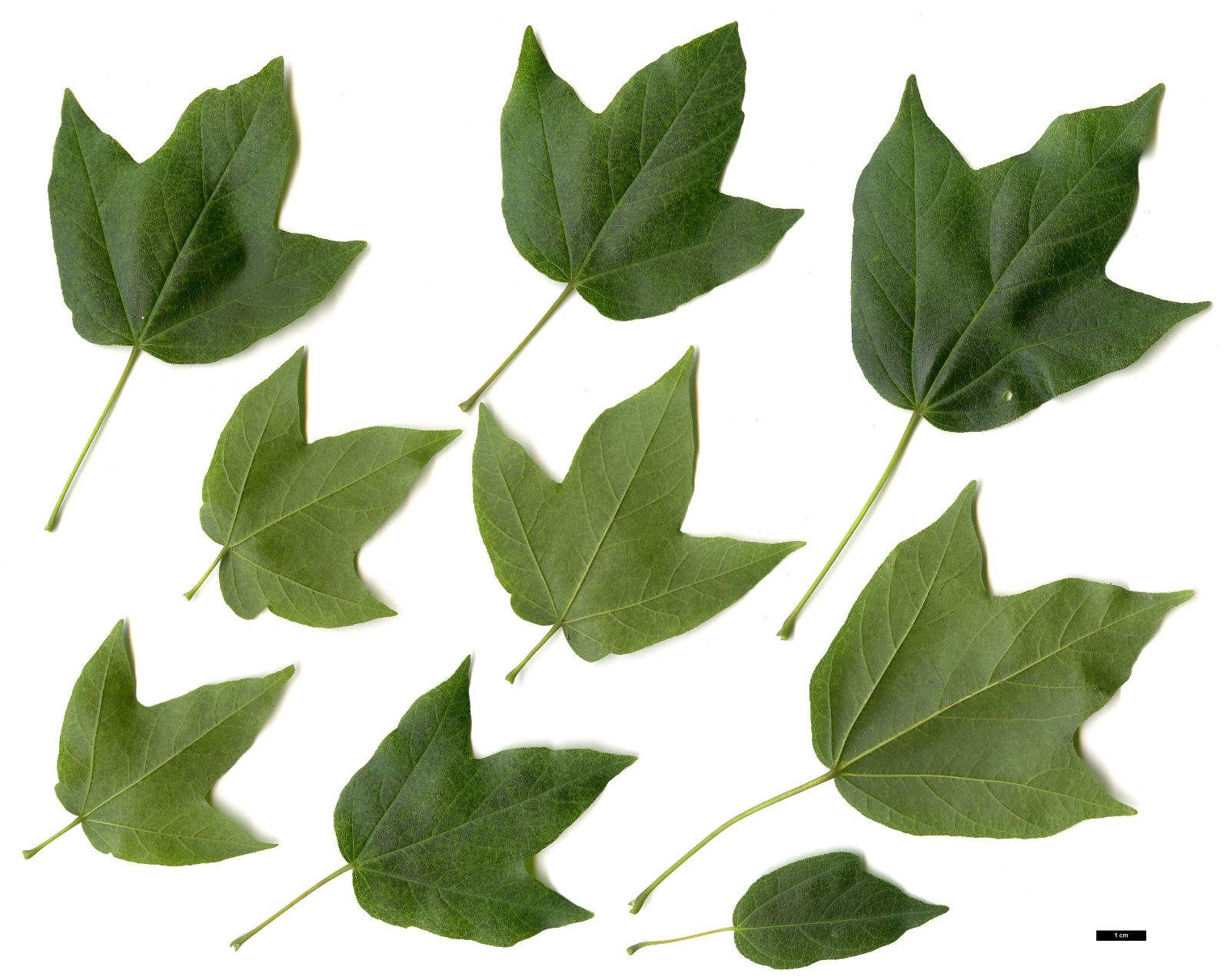Acer × coriaceum
Sponsor
Kindly sponsored by
The Wynkcoombe Arboretum
Credits
Dan Crowley (2020)
Recommended citation
Crowley, D. (2020), 'Acer × coriaceum' from the website Trees and Shrubs Online (treesandshrubsonline.
Genus
- Acer
- Sect. Acer
Synonyms
- Acer × bornmuelleri Borbas
- Acer × duretti Pax
- Acer × martinii Jordan
- Acer peronai Schwerin
- Acer × rotundilobum Schwerin
Other taxa in genus
- Acer acuminatum
- Acer amplum
- Acer argutum
- Acer barbinerve
- Acer buergerianum
- Acer caesium
- Acer calcaratum
- Acer campbellii
- Acer campestre
- Acer 'Candy Stripe'
- Acer capillipes
- Acer cappadocicum
- Acer carpinifolium
- Acer 'Cascade'
- Acer caudatum
- Acer ceriferum
- Acer chapaense
- Acer chienii
- Acer circinatum
- Acer cissifolium
- Acer × conspicuum
- Acer cordatum
- Acer coriaceifolium
- Acer crataegifolium
- Acer davidii
- Acer diabolicum
- Acer distylum
- Acer divergens
- Acer duplicatoserratum
- Acer elegantulum
- Acer erianthum
- Acer 'Esk Flamingo'
- Acer fargesii
- Acer fenzelianum
- Acer flabellatum
- Acer forrestii
- Acer franchetii
- Acer × freemanii
- Acer fulvescens
- Acer 'Gimborn'
- Acer ginnala
- Acer glabrum
- Acer 'Gold Coin'
- Acer granatense
- Acer grandidentatum
- Acer griseum
- Acer heldreichii
- Acer henryi
- Acer × hillieri
- Acer hookeri
- Acer hyrcanum
- Acer japonicum
- Acer kawakamii
- Acer komarovii
- Acer laevigatum
- Acer laurinum
- Acer laxiflorum
- Acer lobelii
- Acer longipes
- Acer macrophyllum
- Acer mandshuricum
- Acer maximowiczianum
- Acer maximowiczii
- Acer metcalfii
- Acer miaotaiense
- Acer micranthum
- Acer 'Mindavi'
- Acer 'Minorient'
- Acer miyabei
- Acer miyabei × campestre
- Acer monspessulanum
- Acer morifolium
- Acer 'Mozart'
- Acer oblongum
- Acer obtusifolium
- Acer okamotoanum
- Acer oliverianum
- Acer opalus
- Acer orientale
- Acer palmatum
- Acer papilio
- Acer pauciflorum
- Acer pectinatum
- Acer pensylvanicum
- Acer pentaphyllum
- Acer pentapotamicum
- Acer pictum
- Acer pilosum
- Acer pinnatinervium
- Acer platanoides
- Acer platanoides × amplum
- Acer platanoides × truncatum
- Acer × pseudoheldreichii
- Acer pseudoplatanus
- Acer pseudosieboldianum
- Acer pubinerve
- Acer pycnanthum
- Acer rubescens
- Acer rubrum
- Acer rufinerve
- Acer saccharinum
- Acer saccharum
- Acer sempervirens
- Acer 'Serpentine'
- Acer serrulatum
- Acer shenkanense
- Acer sieboldianum
- Acer sikkimense
- Acer 'Silver Cardinal'
- Acer 'Silver Ghost'
- Acer sinense
- Acer sinopurpurascens
- Acer spicatum
- Acer stachyophyllum
- Acer taronense
- Acer tataricum
- Acer tegmentosum
- Acer tenellum
- Acer tetramerum
- Acer tibetense
- Acer tonkinense
- Acer triflorum
- Acer truncatum
- Acer tschonoskii
- Acer turkestanicum
- Acer tutcheri
- Acer ukurunduense
- Acer velutinum
- Acer wardii
- Acer 'White Tigress'
- Acer wilsonii
- Acer × zoeschense
A naturally occuring cross between A. monspessulanum and A. opalus subsp. obtusatum. A late deciduous shrub or tree to 10 (–15) m, densely branched. Bark grey and smooth to slightly fissured. Leaves coriaceous, 4–7 × 5–8 cm, palmately 3-lobed, the lobes oblong-ovate, base cordate to subcordate, glabrous or sparsely pubescent below, margins entire to remotely dentate; petiole 3–8 cm long, green or reddish; autumn colour yellow or none. Inflorescence axillary or terminal, corymbose. Flowers yellowish-green, 5-merous. Samaras to 3 cm long, wings spreading at acute angles or more broadly; nutlets spherical. Flowering in April, with unfolding leaves, fruiting in October. (Bean 1976; Krüssmann 1984; van Gelderen et al. 1994; le Hardÿ de Beaulieu 2003).
Distribution Bosnia and Herzegovina Croatia France Greece Italy North Macedonia Serbia Slovenia Spain
Habitat As of its parents, where they overlap.
USDA Hardiness Zone 5-6
RHS Hardiness Rating H6
Conservation status Not evaluated (NE)
Taxonomic note Hybrids between A. monspessulanum and A. opalus subsp. obtusatum have been recorded on several occasions. Most have been recorded from cultivated trees, though some are of known wild origin (de Jong 2011). Several names have been assigned to those that have been separately described, included here in synonymy. Bean’s (1976) inclusion of Acer pseudoplatanus in the parentage of A. × coriaceum, rather than A. opalus subsp. obtusatum, was made in error, as was his assertion that A. × durettii was a cross that also involved A. pseudoplatanus (de Jong 2011).
Acer × coriaceum is reportedly a vigorous growing hybrid, ultimately achieving a stature intermediate between its parents (le Hardÿ de Beaulieu 2003). Neat in habit, its chief horticutural attributes are its flowers and early spring growth, as any autumn colour is distinctly lacking. It is inferior to both its parents in this regard, and with both parents also being prolific spring flowerers, either would be the superior choice in the garden, depending on available space. The evident rarity of A. × coriaceum in cultivation, largely restricted to speclialist collections, is perhaps reflective of this. It should be noted, however, that the hybrid does retains its leaves rather longer, until December or even later.
The UK and Ireland champion, growing at Westonbirt Arboretum, Gloucestershire, measured 17 m tall in 2014, though has been ominously oozing a dark exudate, albeit inconsistently, for the last decade. Given its multiple origins, the statement of van Gelderen & van Gelderen (1999) that it is probably extinct in the wild has always seemed unlikely, and has now been more or less disproven by the recent observance of wild specimens in Italy (F. Ducci, pers. comm. 2016) and the distribution information attached to its synonyms provided by van Gelderen et al. (1994).
Compared with A. monspessulanum, A. × coriaceum has slightly larger leaves with broader lobes. Its leaves are typical smaller than those of its other parent, A. opalus subsp. obtusatum, while its leaveas are also only sparsely pubescent on the lower surface, whereas in A. opalus subsp. obtusatum, these are often persistently felty pubescent.
In New Trees A. × bornmuelleri was treated as a distinct taxon, and the name may be encountered occasionally. The finest specimen known under this name is that at the Sir Harold Hillier Gardens, 12.3 m tall, 37.8 cm dbh, in 2004 (Grimshaw & Bayton 2009), but only 12.6 m by 2017 and there is a 9 m specimen (2019) at Thenford House (Tree Register 2020).




